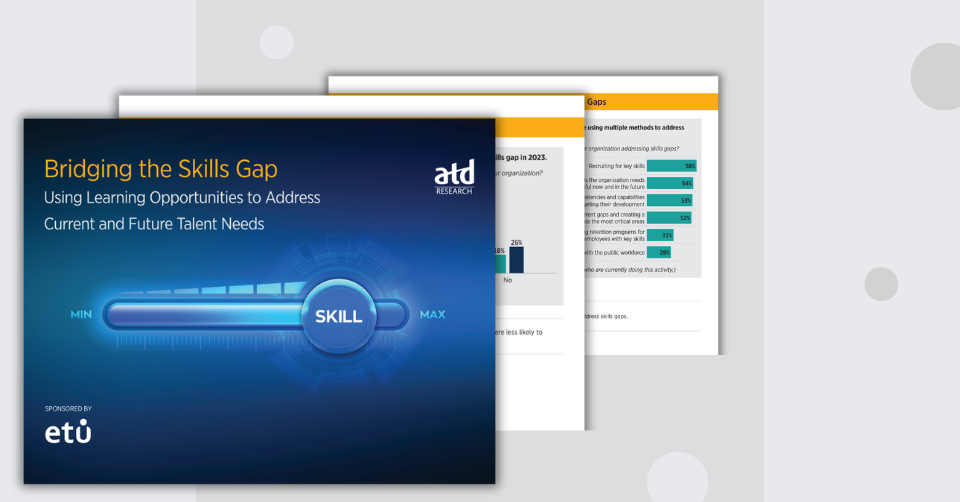Improve learner retention by engaging emotional responses

Emotions are one of the most potent natural memory triggers humans have access to. Whether the emotion is negative or positive, the release of corresponding hormones will activate a memory formation. When a situation or activity positively triggers employees’ emotions in the workplace, they also become excited and invested.
Conventional e-learning often fails to create an emotional connection with learners, meaning memory retention also suffers.
Researchers looking to understand the connection between human emotions and behaviors recently expanded this thought to include additional elements. Recent academic research shows that emotion can play an essential role in education. It can impact learning, memory, attention, cognition, and motivation.
For example, memories formed during emotional events are more likely to stick with a learner compared to those where the emotions are not heightened. Emotional states can also significantly impact a learner’s cognitive flexibility or how well a learner can adapt to new changing events or elements of surprise. This can lead to how a learner’s emotional state can influence how they process small details or view the overall picture.
Motivation is another aspect of learning that can be impacted by emotion. Positive emotions, such as interacting with a person or simulated character, can improve interest in a topic or scenario. These intrinsic motivators have long been associated with simulations, games, and social learning. On the other hand, negative emotions can be a tremendous extrinsic motivator. For example, the fear of a bad result can encourage learners to achieve goals.
A person’s emotional state can impact their ability to learn. The inference is that it is possible to transform a digital learning experience by triggering an emotional response that helps engage the employee and improve skills retention and behavioral change.
The implication of this research for digital learning is evident: for learners to have a better chance of succeeding within an L&D platform, the experience should trigger the release of emotions so they are motivated to start, finish, and synthesize the content and also remember and apply the learning to their job.
Immersive simulations are an effective digital learning method, as they create an emotional response that leads to employee buy-in, skills retention, and behavioral change.
Help ensure that your team’s next learning journey is optimized to drive better performance by considering the science behind the effectiveness of immersive learning. Then, be intentional in its design by using these three proven triggers to amp up learners’ emotions.
1. Design the journey so that the learner responds in the first-person
This is a challenging task for the typical digital learning experience because learners are generally asked to comment based on their observations. But imagine how much more engaging and emotional the experience might be if the learner is allowed to respond in the first person. For example, the content can be about Diversity, Equity, and Inclusion, and the activity has the learner watching a video conversation where microaggression is being displayed.
The third-person type of experience would be, “Should you as a manager respond with option a, b, c, or d?” By contrast, by allowing the learner to be a part of the conversation through a realistic, immersive simulation, the employee can provide a first-person response.
By responding in the first person, the learner identifies with the simulation character impacted by the microaggression. Whatever the response, the learner senses their answer will impact how others will feel.
The first-person perspective that a specific scenario delivered in an immersive simulation provides, triggers emotions and can assist with behavioral change as part of a situation learning strategy.
2. Make it emotional and relatable
Making the online learning journey emotional and relatable means that the learner’s words, actions, and choices can see the potential impact on their colleagues or clients.
For example, when a learning role-play is relatable, the learner can see emotions like a disappointment on a colleague's face or maybe even their supervisor's. However, it is also possible that the learner will see and hear words of affirmation and encouragement, and these cues are proven triggers for different emotional states.
The virtual expression of encouragement may not come in the form of a literal high-five. But with immersive simulation, it is possible to use authoring tools that incorporate realistic videos — an employee’s colleagues in their workplace, for example — which makes the virtual interaction feel very realistic to the learner.
Relatable also means that the content is about people and people skills. All things related to technical processes and procedures are undoubtedly important, but there is nothing more emotionally engaging than dealing with conflict, communication, and leadership. Therefore, focusing on learning objectives that involve developing and practicing “soft” or human skills will orient the experience to be more emotional.
3. Create an element of surprise
Learning is one of the most studied cognitive processes in psychology and neuroscience. Over the past 50 years, scientists have identified the factors that influence or produce learning that people don’t forget, and surprise is one.
Not all online learning is equal. For example, in many digital learning options, watching a lecturer deliver a presentation is followed by multiple-choice answers as the only engagement, leading to learner fatigue. Though the answers themselves may change, the experience of selecting a multiple choice answer without then learning why it was the right or wrong choice is always the same: there is no possible consequence to their choice experienced, and, therefore, no skills practice possible.
The design process of branching into a first-person learning experience creates an element of surprise. This is possible with a situation-based immersive simulation. Branching means designing different routes through the content, depending on input from the user. This could lead to a series of personal, relevant role-playing simulations.
Some brain parts decrease their activity as participants become familiar with a canned presentation that doesn’t allow first-hand interaction. However, when learners see a surprise, these brain sections reactivate, triggering the release of dopamine that makes the learning experience a positive emotional experience.
According to Gartner, with 70% of employees reporting that they don’t have mastery of the skills needed to do their jobs, traditional learning methods are not producing measurable employee or business performance. Companies that use scenario-based immersive learning can optimize behavioral change. A learning simulation platform provides a streamlined method of encouraging and fostering emotional states for learners by allowing the subject to experience first-person, actual workplace situations where their actions will result in negative or positive emotional responses from their virtual peers.
Immersive simulations don’t only enhance and increase learning efficiency - they provide a more engaging and pleasurable experience for your employees, making immersive learning a no-brainer.
 Conor Gaffney, Chief Product Officer
Conor Gaffney, Chief Product Officer
Conor leads simulation design within ETU, working with business stakeholders and instructional designers to deliver award winning assessment and training simulations. Conor believes that with the right tools and processes, realistic and immersive simulations can be quickly and easily developed by non-technical subject matter experts.

